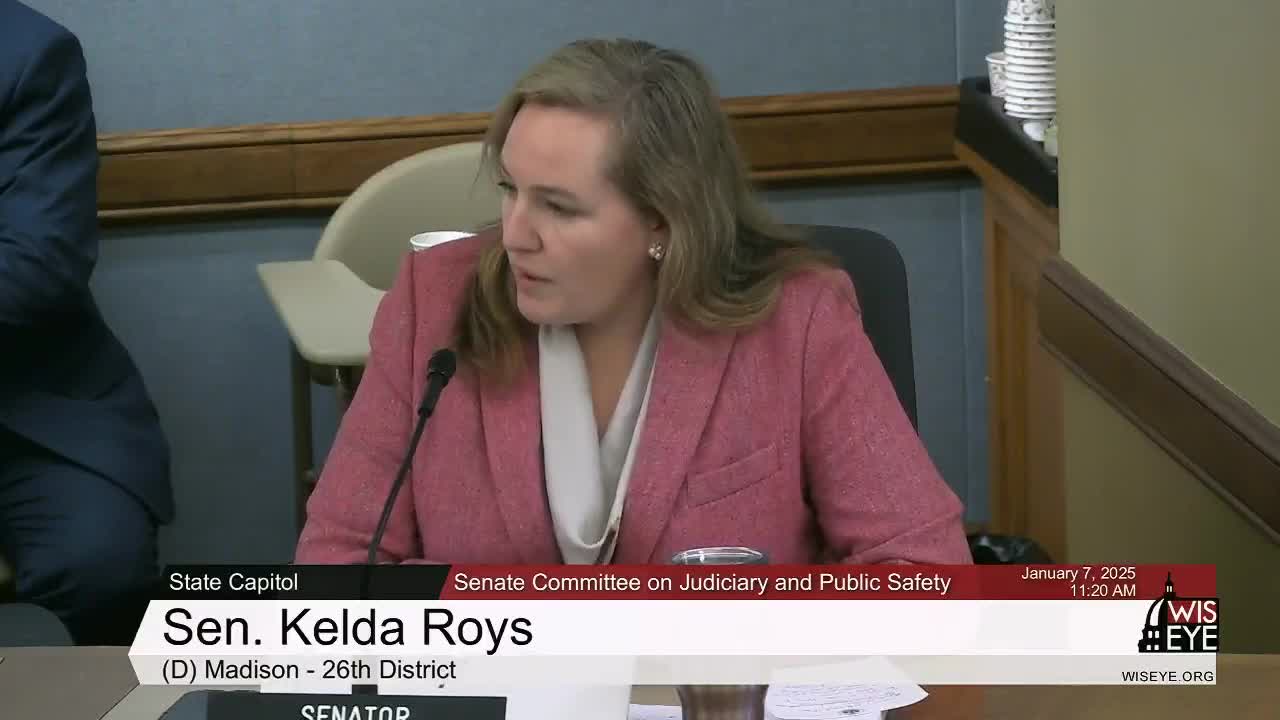Wisconsin lawmaker exposes voter ID law as tool for Republican voter suppression
This article was created by AI summarizing key points discussed. AI makes mistakes, so for full details and context, please refer to the video of the full meeting. Please report any errors so we can fix them. Report an error »

During a recent meeting of the Senate Committee on Judiciary and Public Safety in Wisconsin, lawmakers engaged in a heated discussion regarding a proposed constitutional amendment related to voter ID laws. The debate highlighted concerns about potential voter suppression and the implications for democracy in the state.
One key speaker criticized the amendment, arguing that it was designed to disenfranchise specific voter groups, particularly those who tend to support Democratic candidates. This assertion was backed by sworn testimony from Republican lawmakers involved in the original voter ID law, who expressed their excitement over the prospect of limiting Democratic voter turnout. The speaker emphasized that such measures could skew election outcomes in a closely divided state like Wisconsin, where every vote counts.
The discussion also touched on broader issues affecting Wisconsin residents, including the need to address pressing community concerns such as rising costs for healthcare, prescription drugs, and childcare. The speaker pointed out that many voters recently supported public school funding referendums, indicating a strong desire for improved education resources, which they feel have been neglected by current policies.
As the committee continues to deliberate on these issues, the conversation reflects a growing urgency among lawmakers to focus on solutions that directly benefit Wisconsin families, rather than engaging in partisan tactics that could undermine the electoral process. The outcomes of these discussions will be crucial in shaping the future of voting rights and public policy in the state.
One key speaker criticized the amendment, arguing that it was designed to disenfranchise specific voter groups, particularly those who tend to support Democratic candidates. This assertion was backed by sworn testimony from Republican lawmakers involved in the original voter ID law, who expressed their excitement over the prospect of limiting Democratic voter turnout. The speaker emphasized that such measures could skew election outcomes in a closely divided state like Wisconsin, where every vote counts.
The discussion also touched on broader issues affecting Wisconsin residents, including the need to address pressing community concerns such as rising costs for healthcare, prescription drugs, and childcare. The speaker pointed out that many voters recently supported public school funding referendums, indicating a strong desire for improved education resources, which they feel have been neglected by current policies.
As the committee continues to deliberate on these issues, the conversation reflects a growing urgency among lawmakers to focus on solutions that directly benefit Wisconsin families, rather than engaging in partisan tactics that could undermine the electoral process. The outcomes of these discussions will be crucial in shaping the future of voting rights and public policy in the state.
View full meeting
This article is based on a recent meeting—watch the full video and explore the complete transcript for deeper insights into the discussion.
View full meeting